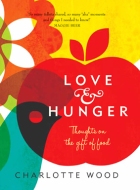 Don’t you love getting food in the post?
Don’t you love getting food in the post?
I have only had this pleasure a few times (apart from deliveries from Feather & Bone, of course, which land at one’s door rather than in the postbox, and when you send them to yourself they don’t really count, I think) and I just love it. Why is it so much fun, I wonder? If it’s a surprise, of course, that’s part of the pleasure, but there’s something else I can’t put my finger on, that makes getting a jar of home-made pickles or biscuits – or a parcel of garlic shoots! – from the postman such a huge treat.
I am starting to investigate the posting of food in a bit more detail, because there are so many times when I would love to send off something very perishable just as a gesture of cookery love. Last Christmas I mailed off a couple of packets of brownies, which worked just fine, but what I have really wanted to send lately, but didn’t have the guts to, is a bowl of chicken soup to a friend who was flattened by illness and general misery.
Is that mad? I thought she might think so, and also find that a dripping parcel of potentially lethal substances might make her even sicker, so I decided against it.
But what do you reckon? Think it could be done? I am going to experiment soon and try it. I think if you packed a tub of soup – frozen solid – in a sturdy insulated container packed tightly with some soft ice packs, and made sure it couldn’t move and taped it down securely, and then sent it Express Post so it arrived next morning, it must surely be okay?
Australia Post proudly chats about a cheesemaker who uses their Express Post service here, so with some extra ice for insurance, I reckon it must be okay. Will test it out first on some siblings, perhaps, before I venture into sending soup to people who might actually sue me (you wouldn’t do that, would you, siblings?).
Other, less perishable food is a total cinch to send. I even sent a box full of preserved lemon, preserved home-grown tomatoes and some chutneys and whatnot to a friend in Switzerland recently, and because I’m an idiot I didn’t realise till I’d left the post office that I’d accidentally sent them by sea, so they took months and months to arrive – but all safely, and to my knowledge without any subsequent poisoning taking place.
More recently, I ordered some of Moon over Martinborough’s gorgeous first harvest of olive oil – if you haven’t read the MoM blog, you’re missing out on some deliciously entertaining writing (and even podcasts!) about the adventures of two American lads landing in New Zealand and starting an olive farm. I ordered their oil from their local wine & olive oil centre, and while the postage made it a slightly more expensive option than usual, it was so worth it for the excitement of its arrival and the quality of the oil itself, of course.
And now, after my barging in on a Twitter chat between @orwellski and @judyhoracek about their love of marmalade from a particular Melbourne annual fete, @orwellski (who, it turns out, happens to be the beau of the fabulous writer Kate Cole-Adams!) has promised to post me a jar of said marmalade! Okay, so I kind of demanded it, but that doesn’t diminish my great excitement at its imminent arrival.
I would love to hear if you too love food by mail – what have you sent or received, and how did you ensure its safe passage?

 I have shared my love of
I have shared my love of 
 I could spend all day admiring the glossy black spikes of wild rice.
I could spend all day admiring the glossy black spikes of wild rice. ¼ cup wild rice
¼ cup wild rice This week I learned something new: sweetness counteracts bitterness.
This week I learned something new: sweetness counteracts bitterness.  Watercress & potato soup a la Patricia Wells
Watercress & potato soup a la Patricia Wells One table, fifteen plates, two notebooks and great deal of salivating. That’s what greeted the Empress and me as we stepped into the hallowed halls of
One table, fifteen plates, two notebooks and great deal of salivating. That’s what greeted the Empress and me as we stepped into the hallowed halls of  But back to the judging. The Empress and I must admit to some relief on seeing this year’s table carrying only
But back to the judging. The Empress and I must admit to some relief on seeing this year’s table carrying only  Once again, the judging was taken extremely seriously. By the Empress anyway, who is quite experienced in these matters (she actually does food judging, for real!) and goes so far as to wear no perfume so as not to interfere with her senses, and sips only water as she makes her way studiously around the table.
Once again, the judging was taken extremely seriously. By the Empress anyway, who is quite experienced in these matters (she actually does food judging, for real!) and goes so far as to wear no perfume so as not to interfere with her senses, and sips only water as she makes her way studiously around the table. This year we also added an optional extra point for X-factorness and general pizazz. Once again, our scores were remarkably similar, varying only by a point each time.
This year we also added an optional extra point for X-factorness and general pizazz. Once again, our scores were remarkably similar, varying only by a point each time.

